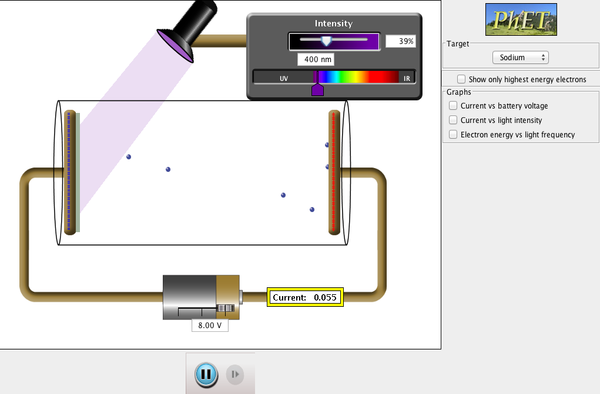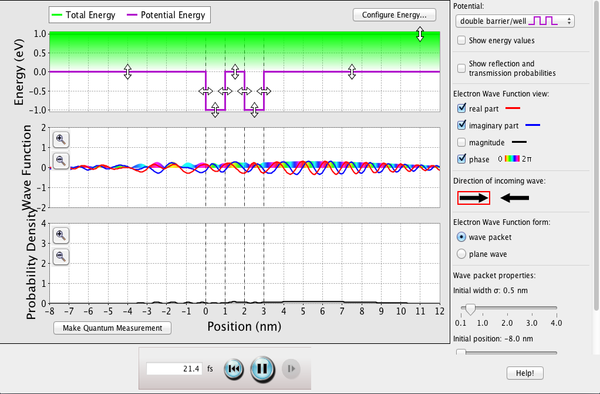- Review of Cartesian, Cylindrical and Spherical coordinate systems by Dan Fleisch.
- Blackbody radiation spectrum
- Planck distribution function
- History of the Planck distribution function
- Why did Planck take E = h nu and not some other dependence?
- The Photoelectric Effect Wiki article
- Heinrich Hertz and KIT, Germany
- Translation of Einstein's 1905 paper on the photoelectric effect
- X-ray Emission
- The Bragg diffraction condition
- X-ray Crystallography
- Compton scattering on wikipedia
- Compton's description of his inelastic x-ray scatering measurements
- Derivation of Compton's equation for inelastic light scattering
- Critique of the Bohr model
- Review of Phys 371
- Lecture 1 summary
- Atomic Spectroscopy
- Davisson-Germer experiment on electron difraction
- Prof. Jay Sau's slides on deBroglie waves and more slides on waves in general
- Lecture 2 Highlights
- Two-slit interference
- Video of single electrons building up a two-slit interference pattern
- An experimental test of Born's rule that QM should be linear in the wavefunction
- Prof. Jay Sau's slides on quantum mechanics
- Lecture 3 Highlights
- Lecture 4 Highlights
- Wave Packet demo in Mathematica
- Gaussian Wave Packet Evolution demo in Mathematica
- Uncertainty Principle slides
- Lecture 5 highlights
- Infinite and finite square well potentials
- Lecture 6 highlights
- Solutions to the Schrodinger equation for the Harmonic Oscillator
- Schrodinger's trick for the harmonic oscillator (basically he discovered the lowering operator a-)
- Lecture 7 highlights
- Maryland pride!
- Lecture 8 highlights
- Lecture 9 highlights
- Quantum wave packet animation
- The Quantum Free Particle
- Lecture 10 highlights
- SNOW DAY
- Lecture 11 highlights
- Lecture 12 highlights
- The Scattering matrix for microwave networks
- Graphical solution to the finite square well problem
- Finite square well wavefunctions
- Lecture 13 highlights
- Scattering from a Finite square well
- Lecture 14 highlights
- Tunneling slides
- Tunneling Wavepacket animation By Becarlson - Own work, CC BY-SA 4.0
- Tunnel Diodes
- Review for Exam 1
- Lecture 15 highlights
- EXAM #1
- Exam 1 first 3 pages
- Exam 1 Results
- Hilbert Space
- Lecture 17 highlights
- Spectra and Eigenfunctions of various Hamiltonian operators
- Lecture 18 highlights
- Lecture 19 highlights
- Lecture 20 highlights
- Superposition and Conservation of Energy
- Lecture 21 highlights
- Tunneling Two-Level Systems
- Lecture 22 highlights
- Notes about the Bloch sphere representation of a two-level quantum system by Prof. Wellstood
- Lecture 23 highlights
- Lecture 24 highlights
- Transitions between energy states
- Lecture 25 highlights
- Lecture 26 highlights
- Lecture 27 highlights
- Review for EXAM 2
- EXAM #2
- Exam 2 first four pages
- Exam 2 Results

